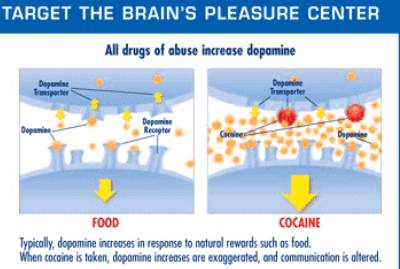|
from The Worldview Literacy Book copyright 2009 back to worldview theme(s) #33 |
| Discussion #33A: Slavery
has a long history (Figure #33a). While
many Western governments outlawed it in the nineteenth century, it
continues both within and outside the law throughout the world. By
most estimates, millions (mostly children) world-wide live in conditions
that essentially represent slavery. Far more numerous are those
incorporating aspects of servitude into their worldviews.
In this regard, Nietzsche distinguished masters and slaves, and
described a “slave morality.”
While the terms slavery
and servitude are used
synonymously by some, the former refers to
a situation where one is subject to a master and is treated like
property, the latter to the general lack of liberty to do as one
pleases. Consider sixteen
reasons—and related worldview themes—why various people have
essentially lost the freedom to control their own lives: 1) they have been kidnapped and are being held
against their will, perhaps in slavery, by those who seek to benefit
from this power they exert over others (themes #29B and #43); 2) they
have violated the law or failed to respect authority, and are prisoners
(themes #29B and #34); 3) they are considered a threat by some
government and are political prisoners (themes #20B and #32); 4) they
are prisoners of war (theme #46B);
5) they live
in an extremely heavy-handed authoritarian state (theme #20B); 6) they
are oppressed by the imperialism of outsiders (theme #22B); 7) they have
been brainwashed and are captives of some cult or dogmatic belief
(themes #2B and #15); 8) they are illiterate, mentally deficient or
physically handicapped and are dependent upon others (themes #2B and
#52); 9) they are victims of domestic violence—captives of some
threatening, tyrannical master (theme #29B); 10) they are victims of a
long time tribal feud or blood vendetta (theme #17A); 11) they have been
discriminated against, scapegoated and forced into an existence at the
edge of society (theme #39B); 12) they are children, without parents to
protect them from such exploitation, forced to work in factories, mines,
farms, armies, etc. whose human rights have been violated (theme #32);
13) they are in debt bondage (theme #45A);
14) they have been forced into prostitution by extreme poverty
(see theme #24); 15) they are practically unable to escape a harsh
environment or somewhere they don't wish to be (theme #24); and 16) they
are fatalistically resigned to their fate and won't seek escape (theme
#11A).
#33B: Addiction
refers to a person being out of
control and unable to stop engaging in an activity known to be harmful—
but instead continues to compulsively pursue it.
As Figure #33b suggests, the consequences of addiction are
staggering. Some addictions can be traced to the physiological and/or
psychological dependence on particular chemical substances—such
as drugs, alcohol, or foods—which produce a craving for the substance.
Others are connected with certain |
Discussion—continued behaviors
that involve rewards—such as gambling, sex, and shopping.
Both involve withdrawal symptoms.
Some are general: continued craving, anxiety, irritability,
insomnia, and depression. Others are more specific to the particular addiction.
Such symptoms become evident when the substance or opportunity to
engage in the pleasurable behavior is unavailable.
In either case, it seems that an addicted person's brain fails to
successfully send a "stop" signal.
Most
drugs causing addiction alter levels of neurotransmitters (such as
dopamine, see Figure #33c) in the brain's reward circuitry
and create changes in the associated receptor sites—making
them less sensitive. This
creates tolerance to greater amounts of the drug and results in
addiction. From a
biochemical viewpoint, people continue to smoke to get nicotine and
maintain high dopamine levels—although smokers themselves would refer
to associated feelings of pleasure.
Efforts to stop smoking bring withdrawal symptoms including
headaches, anxiety, irritability, headaches, anxiety, mental
disturbances, and sleep disruption.
The symptoms peak two to three days after the last cigarette and
are completely gone after two to six weeks.
Alcohol decreases neural activity by increasing the inhibitory GABA neurotransmitter and decreasing the
glutamate in the brain, while increasing the amount of dopamine in the
brain's reward center. Alcoholics' withdrawal
symptoms include severe shaking, convulsions and hallucinations.
Theories as to what causes addiction
generally divide between those emphasizing genetic and biological
causes, and those tracing its origin to cultural and psychological
factors. Undoubtedly certain individuals are genetically predisposed to
become alcoholics or drug addicts.
Studies show that children of alcoholics are four times more
likely to develop this affliction.
Once believed to be caused by moral weakness, addiction is now
best explained by modeling it as a disease caused by impairment of brain
biochemistry or behavioral processes.
Figure #33a: Speaking Out Against Slavery St.
Patrick (390-460) came to Ireland as a slave. Remembered today for bringing Christianity to Ireland,
Patrick is credited with being the first person to speak out
unequivocally against slavery. When
he railed against this "crime so horrible and unspeakable" he
was perhaps recalling his own six years of suffering in bondage. He especially empathized with women captives.
His efforts brought slavery in Ireland to an end
|
|
Figure #33b: Consequences of Addiction NEWS
ITEM:
February 8, 2008 AWorld
Health Organization (WHO) report says, unless governments and societies
act quickly to reverse current trends, tobacco use could kill more than
one billion people around the world this century.
NEWS
ITEM:
May 23, 2007 The
World Health Organization announced a global campaign against alcohol
abuse to begin in 2009. It
estimates there are two billion consumers of alcohol worldwide, with
Europeans consuming the most. There,
alcohol is linked to 3.2 % of all deaths, 20% to 30% of all cancer, and
1/3 of all auto accidents. Addiction
Related Problems: %
of USA adults who are cocaine users=2.5
|
Figure
#33c: 
|
